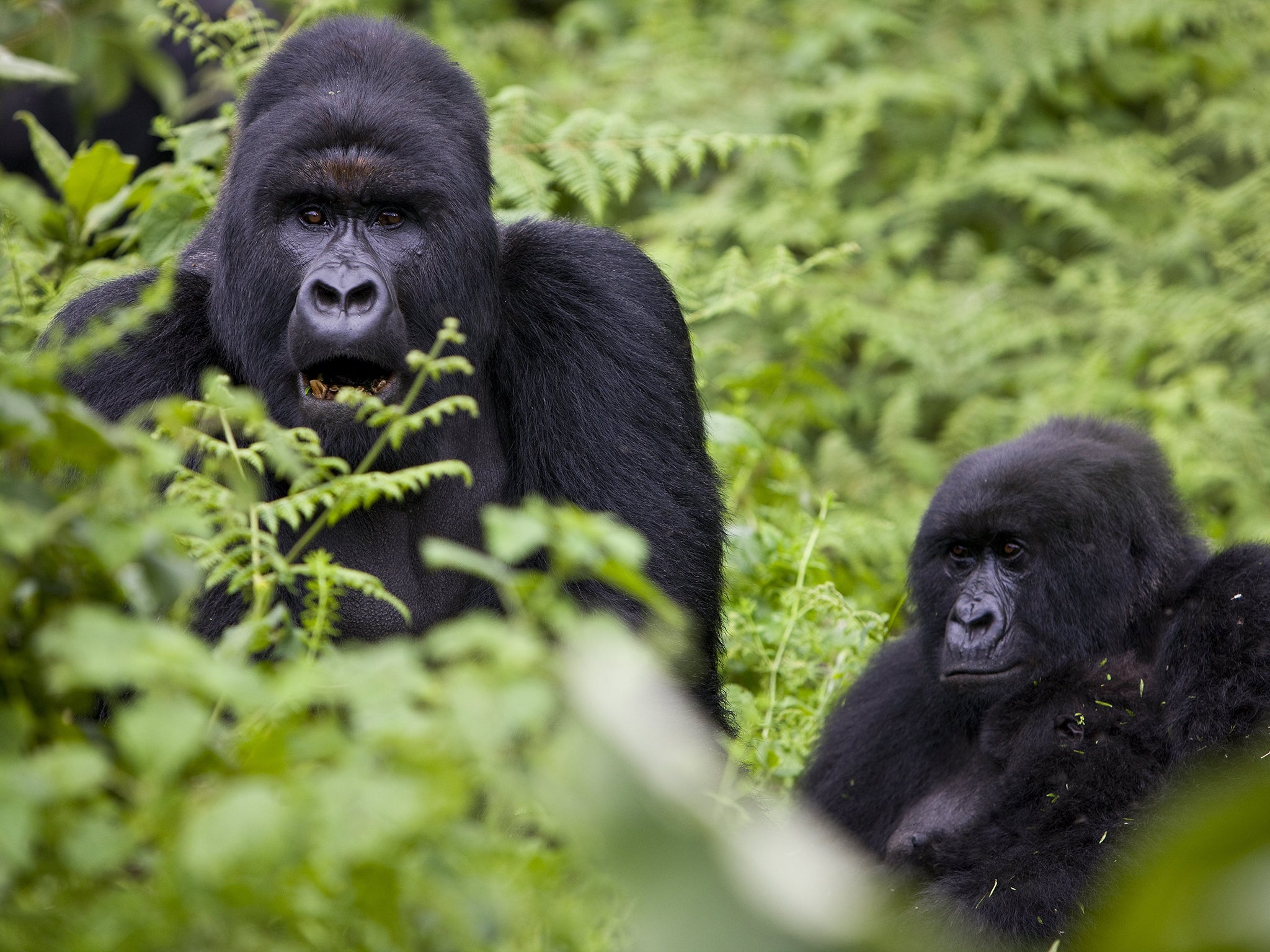Mountain gorillas could survive for thousands of years at very low population levels due to resistance to the genetic effects of inbreeding
The rare mountain gorilla has never numbered more than several hundred individuals for the previous few thousand years

Mountain gorillas could survive for thousands of years at very low population levels of just a few hundred individuals because they appear to be resistant to the genetic effects of inbreeding, a study of gorilla genomes has found.
A comparison of the genomes of the rare mountain gorilla, which is thought to number less than 500 in the high forests of eastern Africa, and its lowland cousin has revealed that the mountain subspecies has probably never numbered more than several hundred individuals for the previous few thousand years.
The findings came as a surprise to scientists as they indicate that mountain gorillas may not be prone to the same genetic problems of inbreeding that have aided the demise of other species that fell to low population levels.
“We worried that the dramatic decline in the 1980s would be catastrophic for mountain gorillas in the longer term, but or genetic analyses suggest that gorillas have been coping with small population sizes for thousands of years,” said Yali Xue of the Sanger Institute in Cambridge, the first author of the study published in the journal Science.
“While comparable levels of inbreeding contributed to the extinction of our relatives the Neanderthals, mountain gorillas may be more resilient. There is no reason why they should not flourish for thousands of years to come,” Dr Xue said.
Mountain gorillas living in the Virunga volcanic mountain range on the border of Rwanda, Uganda and the Democratic Republic of Congo, suffered from hunting and habitat loss and numbers fell to about 253 in 1981. Since then, with the help of a conservation programme, they have increased to a population of about 480 individuals.
The genome comparisons with the more numerous lowland gorilla found that harmful mutations appear to have been largely eliminated within the mountain gorilla’s genes, suggesting that they are adapting well to surviving in small populations.
Join our commenting forum
Join thought-provoking conversations, follow other Independent readers and see their replies
Comments